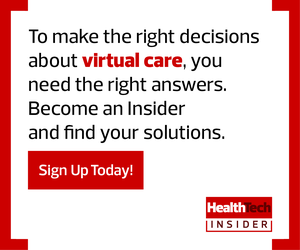3. Interoperability Makes Progress
As providers and vendors alike begin to build application programming interfaces that will improve data sharing among providers, the industry could finally see light at the end of the tunnel when it comes to curing its interoperability woes.
This includes the continued adoption of Health Level Seven International’s Fast Healthcare Interoperability Resources and projects like SMART on FHIR, which seeks to align electronic health record data, apps and tools.
Continuing to push data standards and sharing forward will prove key to facilitating a future where health data comes together to create a full picture of a patient and improves care delivery at a personal level, says Betts.
“Down the line, this is where we’re going to see a lot of interesting opportunities to convene, collect and secure different types of health data — environmental, social, financial — so we can direct insight about all the correlating factors that go into someone’s social determinants of health and better enable them to take control of their journey,” he says.
4. Cybersecurity Stays Top of Mind
Cybersecurity has been a priority for the healthcare industry for years, and that’s unlikely to change. In a recent survey by CDW, cybersecurity won out as the most critical issue facing care organizations by a long shot, with 56 percent of respondents citing it as the most important topic for their organization in 2019.
“Cybersecurity is going to be a theme for the foreseeable future,” says Betts. “No one is going to be out of the woods when it comes to staying vigilant and resilient.”
5. The Need for Cloud Adoption Continues to Grow
The future of healthcare is cloud-enabled, says Betts. “Enabling a more personalized healthcare journey is really only going to work when we get to a cloud-first model,” he notes. “The future healthcare model — radically interoperable data, open and secure platforms — that implies a cloud-first approach.”
Traditionally, however, the healthcare sector has been slow to adopt cloud, and with a third of healthcare organizations in a recent CDW survey still reporting that they do not use the cloud, it’s clear that adoption is still lagging across the industry.
“It’s a hurdle that folks have to get over, and many are starting to,” says Betts. “We need to see folks taking those first steps in liquifying the data, creating the kind of interoperability in the cloud that is possible and, frankly, leveraging some of the capabilities that cloud organizations can bring to the table around microservices, scaling and flexibility to drive insight across a larger set of data.”
MORE FROM HEALTHTECH: Arm yourself with the right info to stay HIPAA-compliant in the cloud.
But What About Emerging Tech?
Blockchain, augmented reality, virtual reality, artificial intelligence: These technologies will all have their place in improving care delivery, but much of their value is yet to be discovered, says Betts.
Blockchain, while intriguing and full of promise, still has few use cases to actually prove its value, making it unlikely that 2019 will be “the year of blockchain.” To get to a place where this tech can break out, Betts encourages providers to continue defining use cases where blockchain can fill a need.
AR and VR, however, are closer to showing practical application in healthcare. While VR has been used in pain management, AR in particular has a wider range of use cases, including surgical planning, imaging and complex diagnostics as a way to “make interventions much more precise,” says Betts.
The piece of emerging tech that may truly shine in 2019, however, is artificial intelligence. “With AI and machine learning, we are going to see a continued revolution in the next 12 months,” says Betts, noting that the industry is beginning to see the capabilities catch up with the promise of these tools, particularly when it comes to engaging automation to reduce administrative burden and enhance clinical decision-making. On the consumer side, the tech has the potential to better harness patient data and improve personalization.
To take advantage of these technologies in the new year, however, will require that stakeholders dive in to see what these tools can really do.
“Take some risks,” says Betts. “Progress is going to require organizations to find the specific use cases where they can take a little bit of risk, put themselves out there and be the vanguard. If everybody waits to be the fifth follower, we will never get the first five.”











